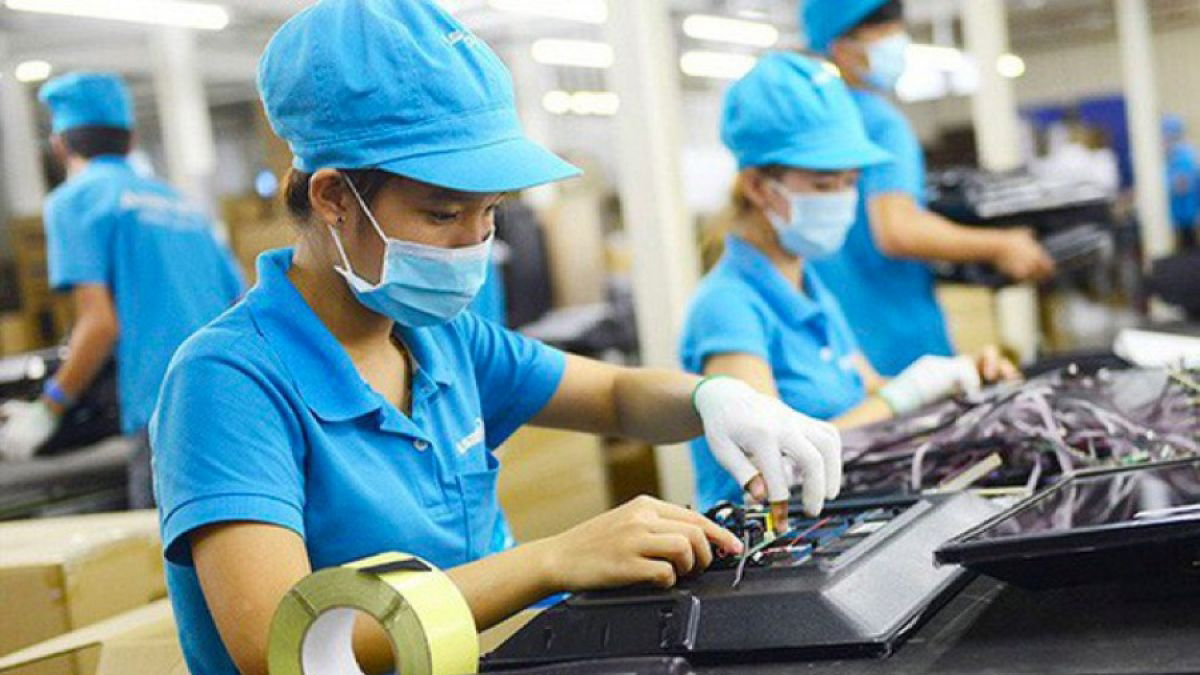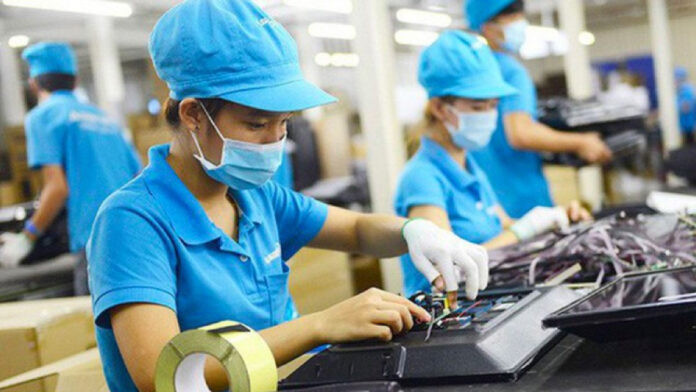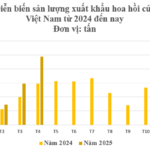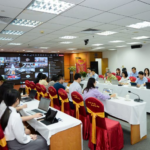Amidst a volatile global economy, Vietnam’s exports—a vital driver of the country’s economy—are facing unprecedented challenges. The first five months of 2025 witnessed a notable decline in export values. But is this merely a short-term slip, or does it signal a new era demanding a radical transformation?
The Export Landscape is Fading
In previous years, exports were a bright spot for Vietnam’s economy, consistently growing despite global fluctuations. However, the negative impact of the global situation has led to a decline since the first quarter of 2025, with trade balances starting to show signs of deterioration.
According to the latest preliminary statistics from the General Department of Customs released on May 22, the total import and export turnover of goods in the first half of May 2025 (from May 1 to May 15) reached USD 36.09 billion, a decrease of 6.8%, equivalent to USD 2.64 billion compared to the performance in the second half of April 2025. Notably, the total export turnover in the first half of May 2025 reached USD 16.88 billion, a decrease of 18.3% compared to the previous period, equivalent to USD 3.77 billion. This double-digit decline indicates that exports are facing significant challenges.
The statistics from the General Department of Customs also showed a decrease in key export categories such as machinery, equipment, tools, and spare parts, which fell by USD 513 million (19.7%); textiles and garments, down by USD 401 million (22.8%); computers, electronic products, and components, decreased by USD 394 million (8.9%)…
According to economic expert Nguyen Tri Hieu, the drop in export values is not just a mere statistic; it clearly reflects external obstacles such as denser tariff barriers, increasingly sophisticated trade protection measures, and intense competition from emerging countries. We are navigating a sharp bend in global trade, where agility, resilience, and long-term strategies will determine businesses’ survival.
Not Just External Factors…
A representative from the Import-Export Department (Ministry of Industry and Trade) quickly weighed in on this issue, attributing one of the main reasons for Vietnam’s export challenges to the increase in tariffs from major partners. New trade policies from the US, some European countries, and the Asia-Pacific region have subjected Vietnamese goods to higher taxes, undermining their price competitiveness.
Additionally, technical barriers and quality control regulations have been tightened in many import markets. From environmental certifications and plant quarantines to raw material origins, every detail can become an obstacle if businesses fail to keep up with international standards.

The global trade war is no longer just about tariffs but a comprehensive battle concerning sustainable development standards.
Notably, modern trade is not solely about price. Those who fail to meet environmental, social responsibility, and traceability standards will be left behind. The global trade war is no longer just about tariffs but a comprehensive battle concerning sustainable development standards.
From another perspective, according to Mr. Hieu, while external factors have had an impact, part of the problem stems from internal issues within Vietnam. The export structure has long relied heavily on labor-intensive, low-tech assembly industries. The lack of value chain integration and dependence on imported raw materials and accessories hinder effective adaptation to global fluctuations. Some sectors, such as textiles, footwear, and electronics, have strong production capabilities but lack international brands and struggle to penetrate higher-value segments.
Moreover, many small and medium-sized enterprises remain reactive to policy changes in import markets, lacking strategies to approach new markets or fully exploit the advantages of free trade agreements (FTAs).
Concerning but Not Alarming
Economic experts believe that the current decline in export turnover warrants attention but is not cause for alarm. Vietnam is facing challenges similar to those experienced by other export-oriented economies. This is an opportunity for the export sector to undergo a transformation, reposition itself, and upgrade its strategies. If we turn this crisis into an opportunity, it could be a breakthrough for Vietnam to shift from “manufacturing for hire” to “smart manufacturing.”
Mr. Hieu suggests that instead of relying on concessions from partners, Vietnam needs to take the initiative to strengthen its internal capacity by investing in technology, developing domestic value chains, promoting national brands, and diversifying export markets.
Furthermore, according to Dr. To Hoai Nam, Vice Chairman and General Secretary of the Vietnam Association of Small and Medium Enterprises, it is crucial to ignite positive catalysts to propel us forward. Amid the prevailing gray shades, there are glimmers of hope. Some large enterprises have adeptly pivoted to markets in Africa, the Middle East, and South America, which have lower technical requirements but offer substantial consumption potential… Every crisis carries the seeds of reform. If we seize this opportunity, Vietnam can embark on a new cycle of sustainable and proactive export growth.
While the decline in export values cannot be taken lightly, there is no need for excessive concern. The imperative is to identify the root causes, understand the underlying nature, and take decisive action. It’s time for Vietnam’s export sector to embark on a new chapter, a new era—where quality, innovation, and sustainability are the metrics of success, demanding a radical transformation.
What Additional Skills Do Managers Need to Steer Their Businesses?
In a dynamic global economic landscape, characterized by ever-evolving technological trends and shifting tariff barriers, a transformative mindset is essential for business leaders. To thrive in this challenging era, a strategic and adaptive approach is imperative. The question then becomes: what path should leaders take to navigate these complex waters and drive success?
The Golden Opportunity: Unveiling the Billion-Dollar “Gold Mine” that Captivates Americans
This product has immense potential for growth in the upcoming years. With its unique features and innovative design, it is poised to capture the attention of a wide audience and make a significant impact in the market. The possibilities are endless, and the future looks bright for this promising offering.
The Trade Tensions Weave Uncertainty for Vietnam’s Textile Industry
In light of the US-China trade truce, while Vietnam is still in negotiations, Vinatex forecasts a stable order volume for Q3 due to low US inventory levels. However, the company predicts a potential 10% decline in orders for Q4 as purchasing power may weaken. Chairman Le Tien Truong emphasizes the industry’s need to seize the negotiation “lull” to proactively adapt and stay resilient.
HSG: Estimated Accumulated Profit After Tax for the First Seven Months of the 2024-2025 Financial Year Reaches VND 460 Billion
The Hoa Sen Group Joint Stock Company (HOSE: HSG) has released an update on its operational and financial performance.





















